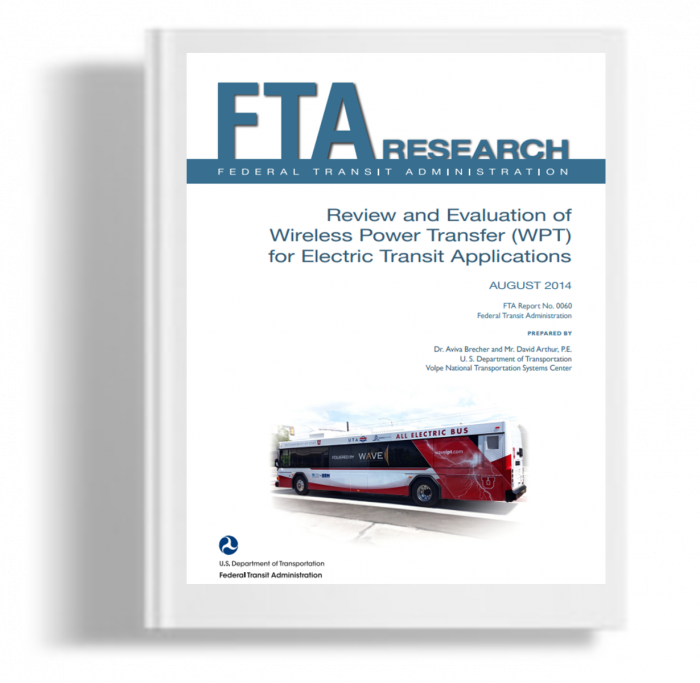Kami menggunakan cookies untuk membuat pengalaman Anda lebih baik. Untuk mematuhi petunjuk e-Pribadi yang baru, kami perlu meminta persetujuan Anda untuk menyetel cookies. Pelajari lebih lanjut .
Review and Evaluation of Wireless Power Transfer (WPT) for Electric Transit Applications
This research report provides a status review of emerging and existing Wireless Power Transfer (WPT) technologies applicable to electric bus (EB) and rail transit. The WPT technology options discussed, especially Inductive Power Transfer (IPT), enable rapid in-station or opportunity (boost) dynamic recharging of electric bus batteries for range extension and promise economic, convenience, and safety benefits. Based on a comprehensive literature review, international and U.S. WPT bus and light rail systems deployed, demonstrated, or planned are described, noting their respective providers, system specifications and attributes, and Technology Readiness Level (TRL).
This research report provides a status review of emerging and existing Wireless Power Transfer (WPT) technologies applicable to electric bus (EB) and rail transit. The WPT technology options discussed, especially Inductive Power Transfer (IPT), enable rapid in-station or opportunity (boost) dynamic recharging of electric bus batteries for range extension and promise economic, convenience, and safety benefits. Based on a comprehensive literature review, international and U.S. WPT bus and light rail systems deployed, demonstrated, or planned are described, noting their respective providers, system specifications and attributes, and Technology Readiness Level (TRL). FTA-funded WPT demonstrations currently underway or planned are also highlighted. Industry technical and safety standards (frequency, power, and interoperability) are currently in development. Regulations and consensus standards for emissions and human exposure safety to electromagnetic radiation and fields (EMR/EMF) and protection from electromagnetic Interference (EMI) are reviewed. Measured EMR/EMR levels for various WPT electric bus systems comply with applicable occupational and public safety, health, and environmental exposure standards. Information on the cost-benefit, reliability, durability, and safety of WPT infrastructure and vehicle systems is scant. Research gaps, as well as challenges and opportunities for WPT commercial deployment, are identified.

